Spring arrives March 20th—58 days from today, and as you see, I’m eagerly counting the days! My seed catalogs, dog-eared and worn, have been perused intensely since the first of the year; seed orders are arriving, and my fingers itch to dig into the soil.
The truth is, I’ve already started sowing indoors. But wait, it’s February—isn’t that too soon? Yes and no. It is too early for warm-season vegetables but the perfect time for others.
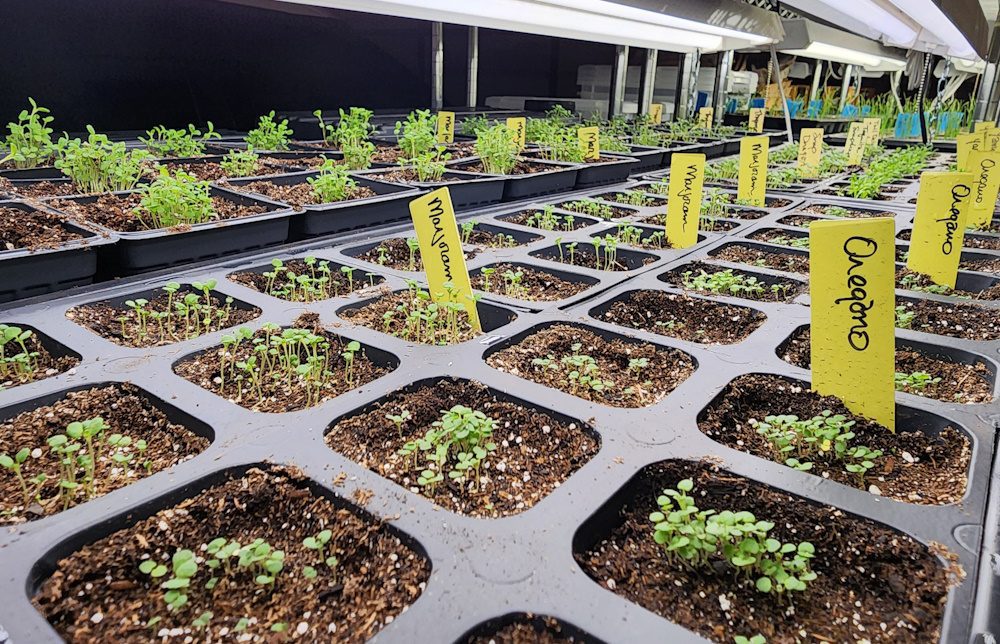
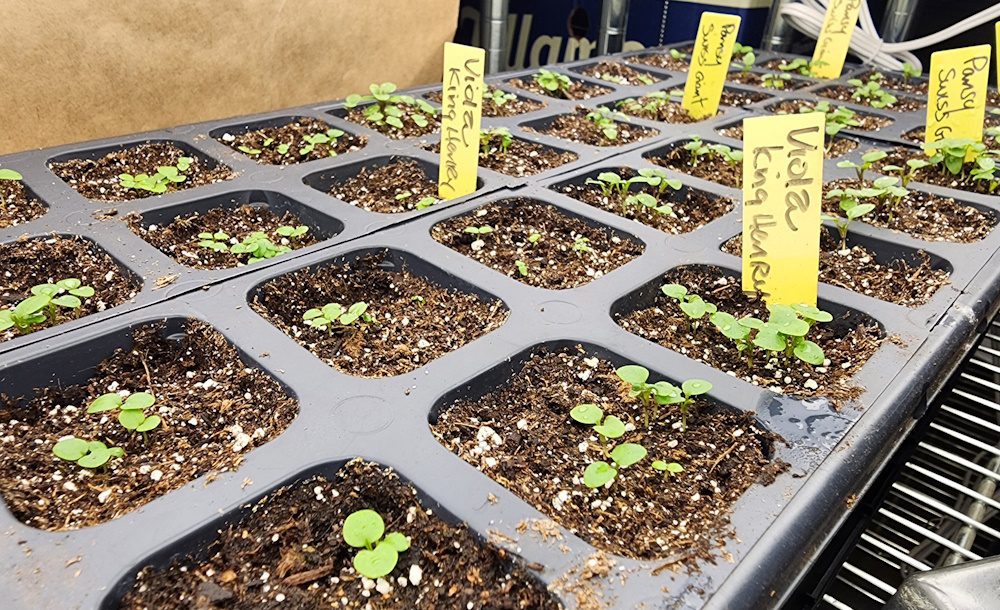
Unfortunately, too many gardeners make the common mistake of starting all their seeds mid-winter. We’re desperate to start growing and think we’re getting a “jump” on the season.
Sadly, this is not the case. By spring planting, many of our early-sown plants are stressed, spindly, weak, and struggle once planted outdoors.
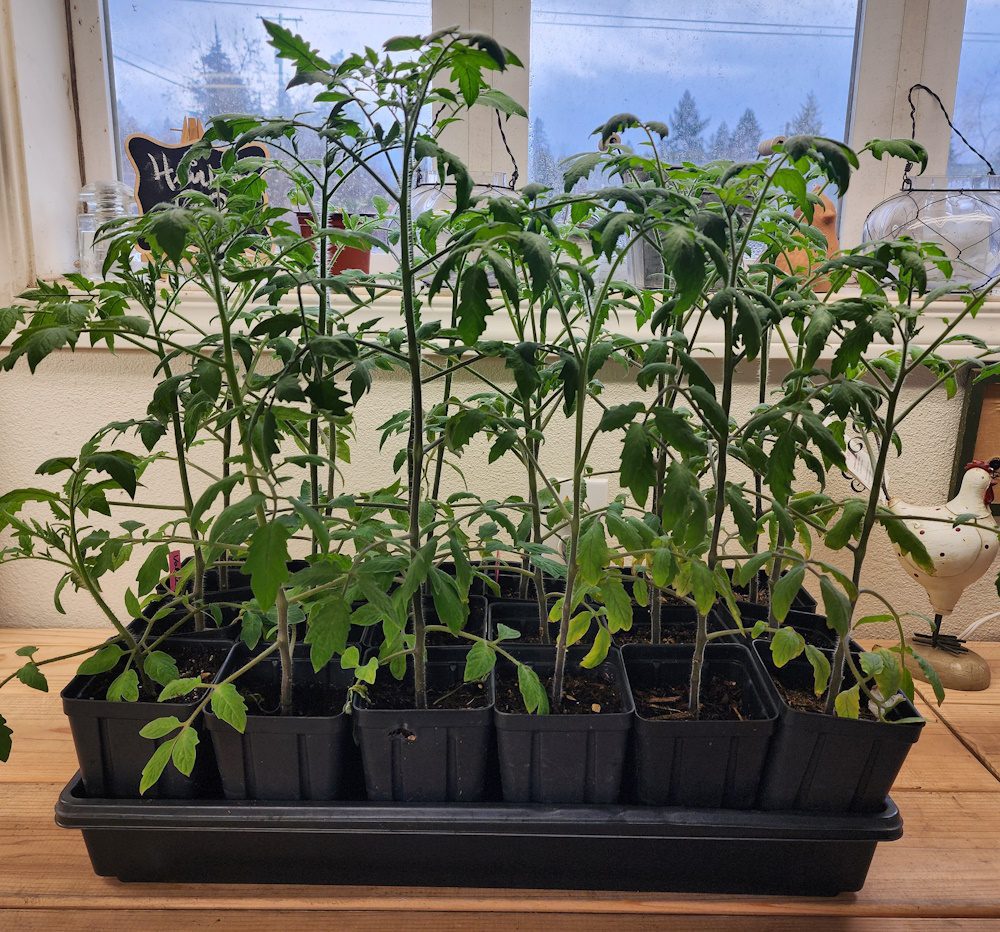
Know When to Start
Timing is everything when seed-starting, especially for seeds started indoors. When to start depends on what you are growing and your area’s last average day of frost.
Your garden literally lives and dies by two dates: the last average frost date in the spring and the first average frost date in the fall. These dates also mark the start and end of your frost-free growing season.
Frost dates are critical to determining when to sow seeds indoors and outdoors and help ensure seedlings are planted when soil temperatures and daylight hours are optimal for their growth.
The last average day of frost (32°F) means a 50% chance of frost occurring on that date. This date typically signifies when it is safe to begin transplanting or sowing many warm-season crops outdoors. Similarly, the average first day of frost indicates a 50% chance of frost in the fall.
For the Coeur d’Alene area (including Hayden, Post Falls, and Rathdrum), the last and first average frost dates are May 6 and October 5, respectively. However, in Athol, just a few miles to the north, the dates change to May 23 and September 16.
While these locations are in the same region, a few miles or feet in elevation can make a big difference. You can find your frost dates by entering your zip code here: https://garden.org/apps/frost-dates/ or download the chart below for local regions: Kootenai/Shoshone Frost Dates
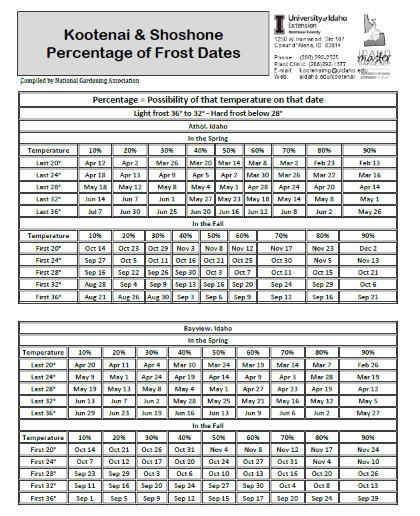
My years of experience gardening in Coeur d’Alene have taught me to wait until at least May 15 to plant outdoors—at that point, there’s about a 20% chance of frost.
Still, it’s important to note that the dates are averages and not guarantees since many other variables, such as structures, windbreaks, or open land, can affect your landscape’s climate.
Going Back to Start
Depending on the plant variety, indoor sowing usually begins 4 to 16 weeks before the last frost date. Check the seed packet; it contains a wealth of information, including indoor and outdoor sowing recommendations and the number of weeks to start before the last frost.
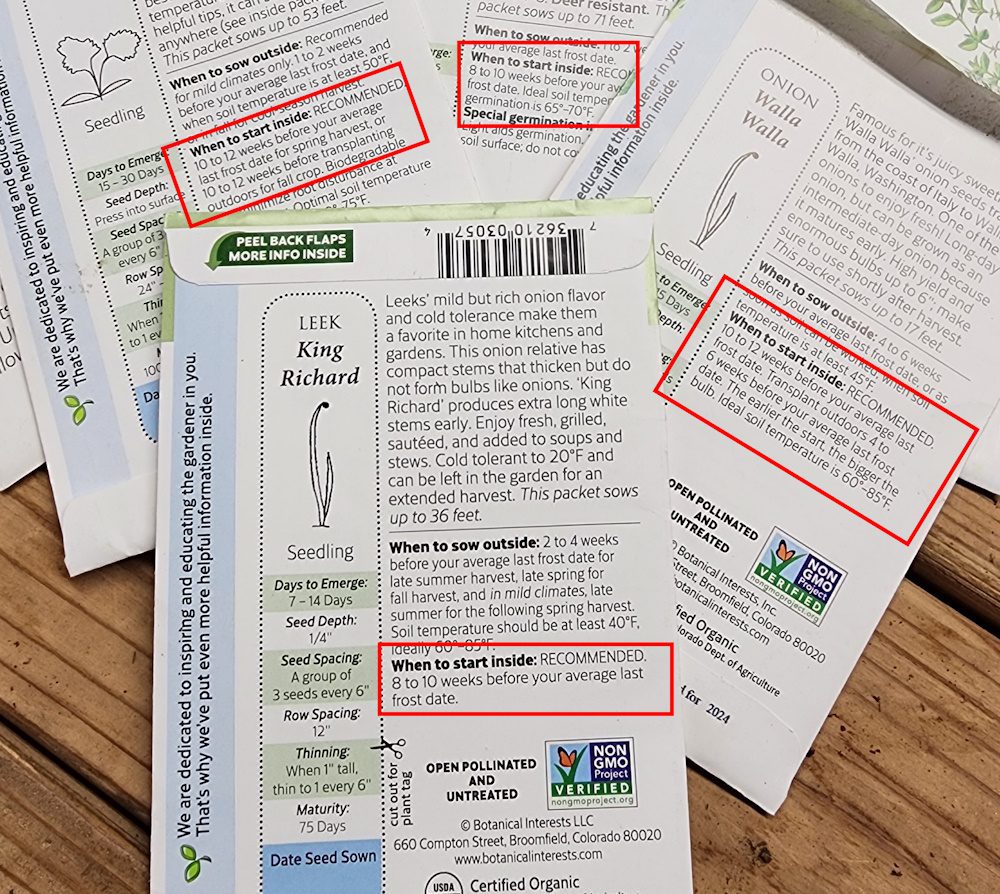
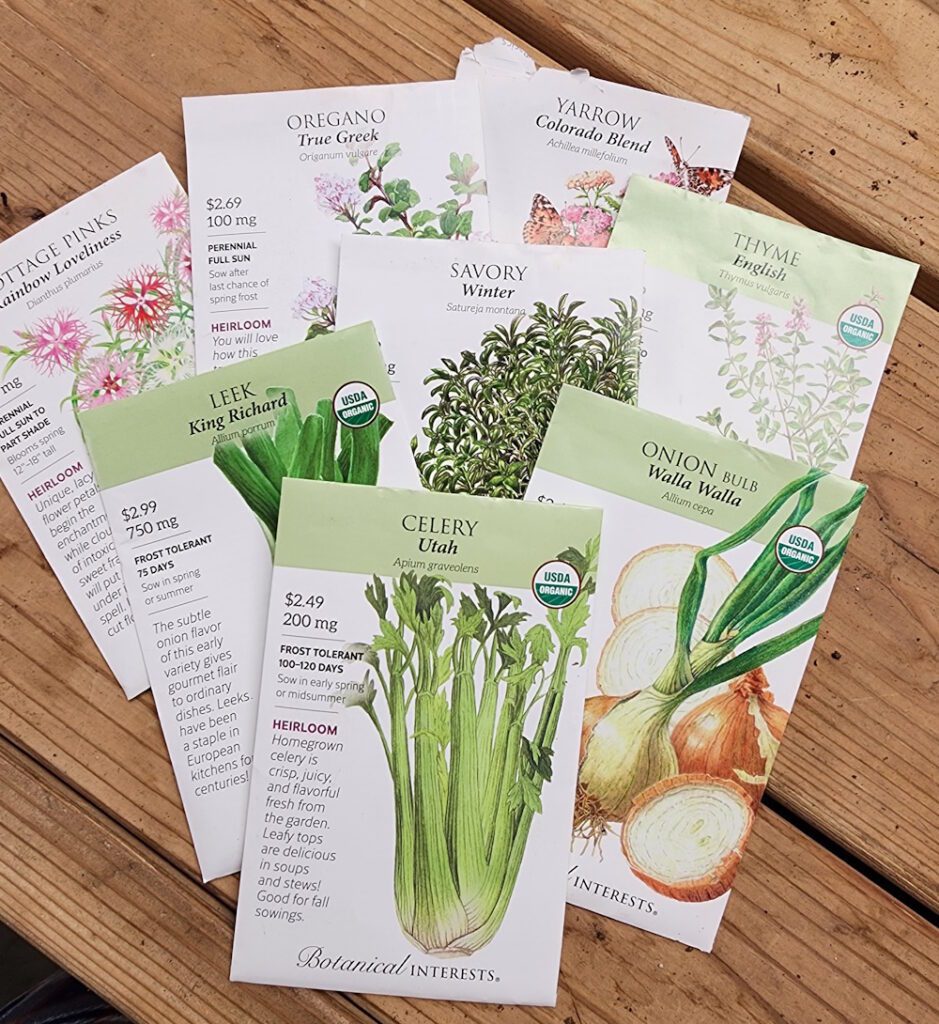
Count back from your last frost date to determine when to start indoor sowing. For example, tomatoes are sown indoors 6 to 8 weeks before the last frost; for the Coeur d’Alene area, that corresponds to mid-March to early April (not February!).
Frost dates also align with the plant’s “days to maturity,” or how many days it takes to achieve a harvest. This allows you to select varieties that produce a crop within your frost-free growing period.
Consequences of Starting Too Soon
As gardeners, we aim to grow a vibrant garden filled with healthy and productive plants. Unfortunately, sowing seeds at the wrong time does not achieve this. It wastes time, effort, money, and results in dismal transplants. Here’s what to expect when seeds are sown too early in the growing season:
- Spindly and weak seedlings result from insufficient light. Seedlings require 12 to 16 hours of light each day, which a south-facing window in winter cannot provide. Grow lights help, but plants often outgrow lighted shelves.
- Crowded and rootbound seedlings. Seedlings rapidly outgrow their initial containers, requiring repotting into larger containers, often more than once. Plants held in small containers become stressed and rootbound. The competition for resources like water and nutrients is also more significant, resulting in stress and nutrient deficiencies.
- Physical space considerations. Unless you grow in a commercial greenhouse, you will likely run out of growing space before transplanting outdoors. One plant flat can hold up to 1,000 seedlings. As they grow, so does the space required to keep them, including the need for sufficient light and heat.
- A greater risk of disease and pests. The longer you keep plants indoors, the greater the occurrence of fungal diseases, like dampening off, or pest infestations, like aphids. It can be challenging to manage or eradicate these situations.
- A greater risk of transplant shock. Finally, stressed or weakened seedlings will take longer to establish when moved outdoors and are at a much greater risk of transplant shock.
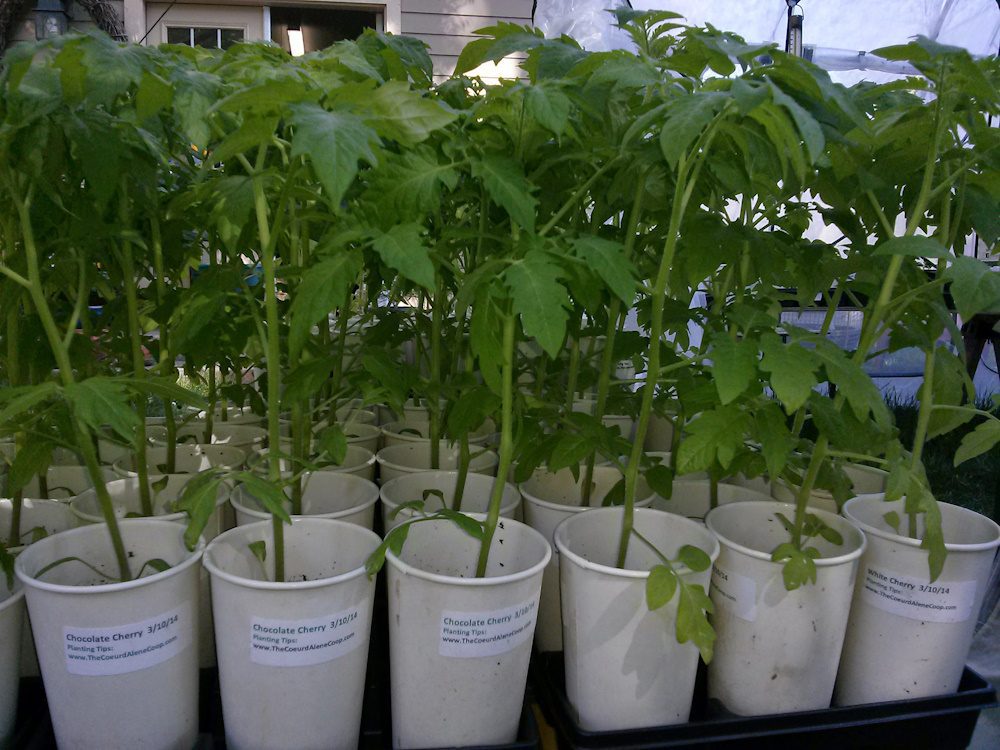
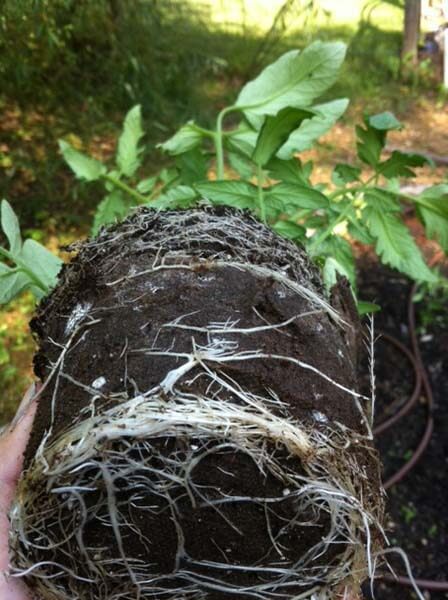
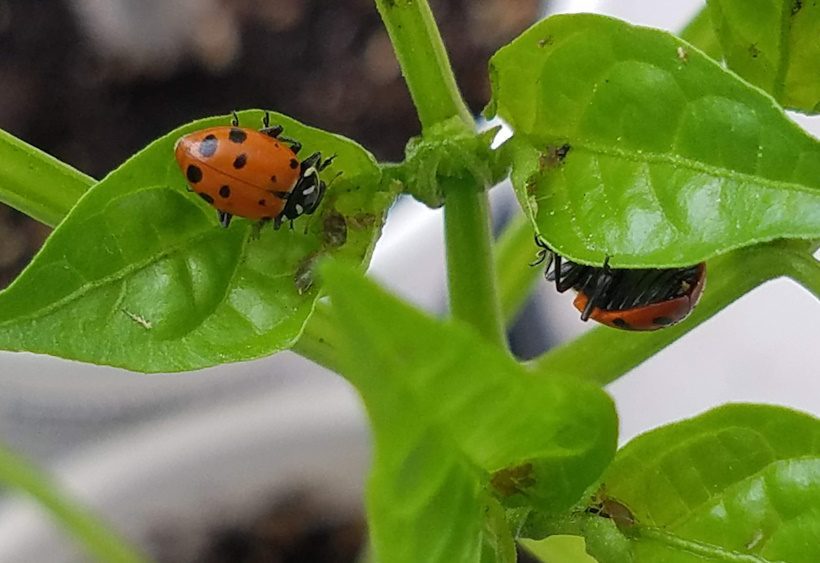
So, What Can You Sow Early?
If you’re itching to start seeding, you’ll be delighted to know that many cool-season vegetables, herbs, and flowers must be sown 10 to 12 weeks before the last frost.
That means starting seeds of cool-season vegetables like broccoli, cauliflower, and cabbage or alliums such as onions, leeks, shallots, and chives in late winter is perfectly okay; yay!
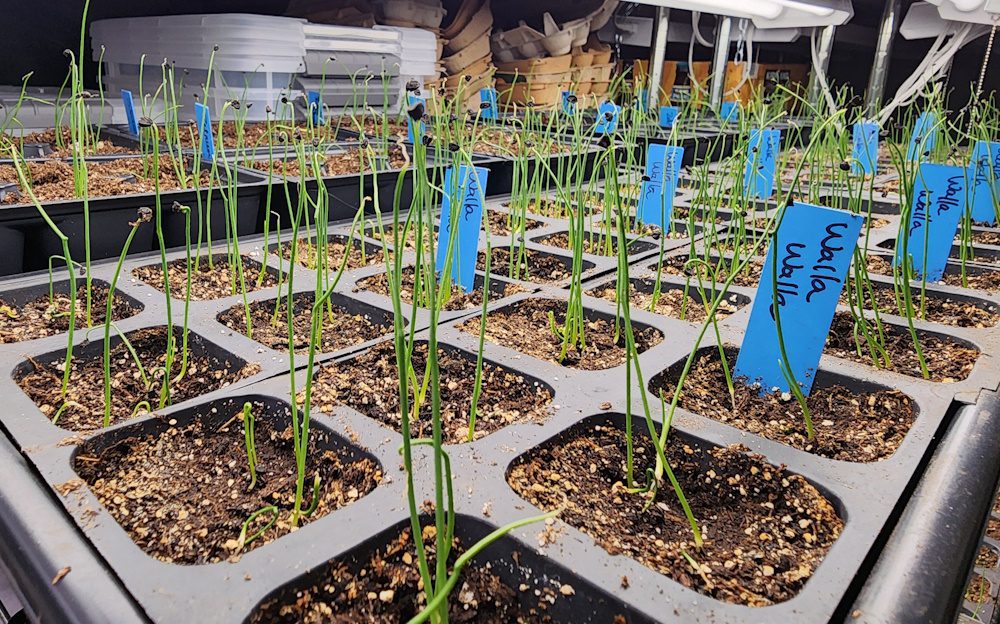
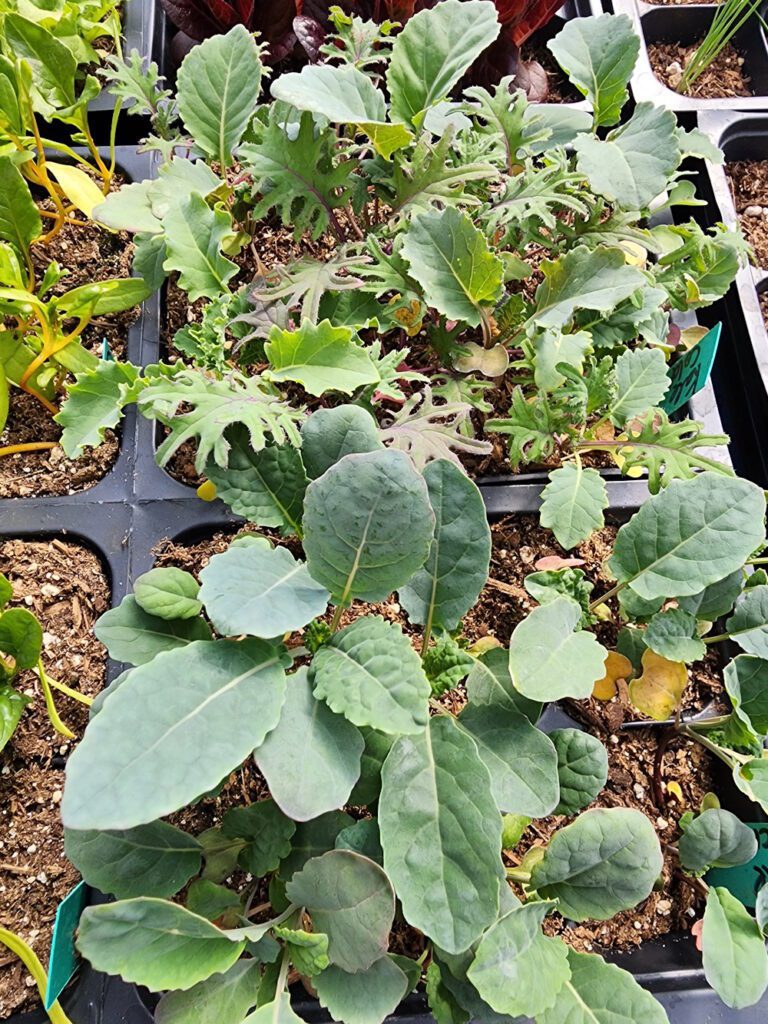
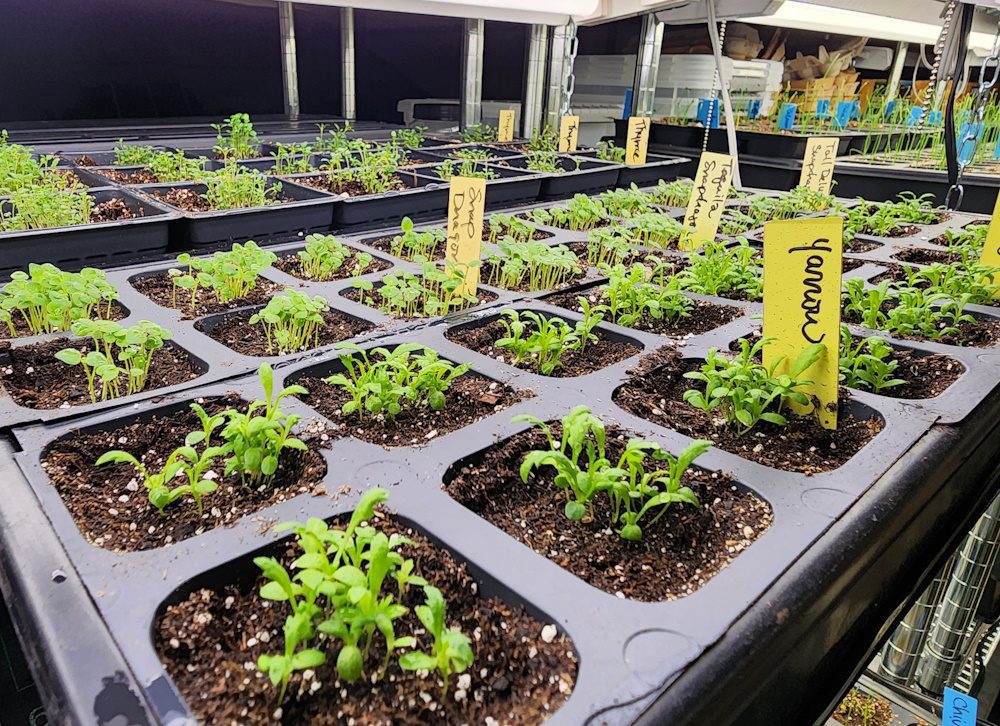
Indoor sowing in February also benefits slow-to-grow herbs and flowers like thyme, sage, parsley, snapdragons, pansies, and petunias.
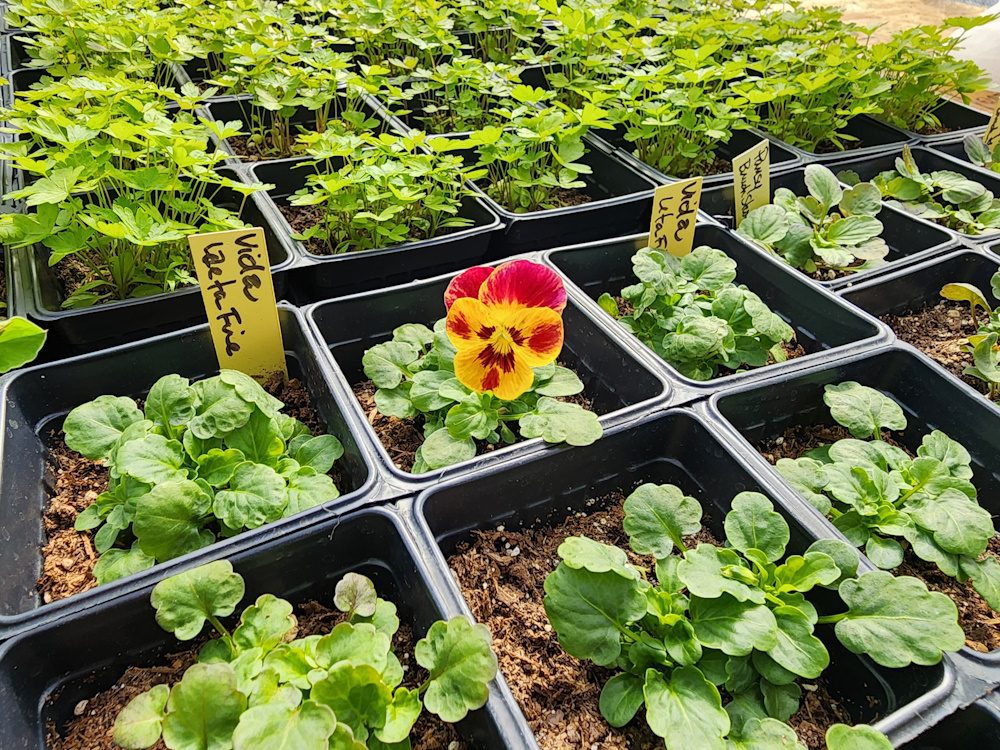
Just steer clear of sowing any warm-season veggies and flowers before their time.
As much as we yearn to dive into seed-starting as early as possible, patience and our frost dates are key to growing healthy, thriving plants. Starting at the right time ensures sturdy seedlings are ready to transition seamlessly to the garden, saving you time, money, and heartache. It also prepares your garden for a productive and flourishing season.


Hello, I’m a first time garlic grower. We live half way in between 41 and 95 on 53. My uncle lives on the coast and has been growing garlic 40+ years. His eyes are going bad so last year he set me up with 11 varieties of Hardneck garlic seeds and his equipment. I tilled a garden spot with mixed in steer manure and planted September 22 to October 2nd. I covered it up with 4” of dead pine needles and shredded leaves. Any advice from here would be appreciated. Vince
Hi Vince,
It sounds like you did everything right last fall. At this point, I recommend removing about half of the mulch material from your garlic. You should see a few garlic tips appearing, and it’s good to remove some of the mulch to allow the soil to warm as it gets warmer. Don’t remove all of the mulch, it helps keep weeds down and later in the season, it will keep the soil moist and cool. Garlic likes water—about an inch a week. If our spring is wet, you won’t need to water as much, but once we hit late May, it’s a good idea to water deeply once a week. You can also apply some liquid fertilizer, like fish emulsion. Finally, you can find more articles and tips on growing garlic on my website here: https://thecoeurdalenecoop.com/category/gardening/growing-garlic/